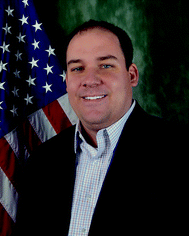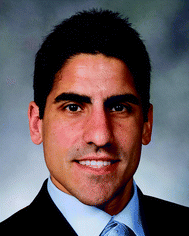Liquid crystal elastomers: emerging trends and applications
Timothy
White
a and
Rafael
Verduzco
b
aAir Force Research Laboratory, Materials and Manufacturing Directorate, Wright-Patterson Air Force Base, Ohio 45433-7750, USA. E-mail: Timothy.White.24@us.af.mil
bDepartment of Chemical and Biomolecular Engineering, Rice University, 6100 Main Street, Houston, Texas 77005, USA. E-mail: rafaelv@rice.edu
 Timothy White | Air Force Research Laboratory, USA |
 Rafael Verduzco | Rice University, USA |
Liquid crystal elastomers (LCEs) are deformable, elastic solids that are ordered, birefringent, and stimuli-responsive. These characteristics in LCEs arise from the combination of liquid crystals – ordered fluids – and elastomers – soft, deformable solids. The first mention of LCEs was by theoretical physicist and Nobel Laureate Pierre-Gilles De Gennes in 1969 when he considered whether a polymer network could be ‘imprinted’ with liquid crystal order. In the decades since, liquid crystallinity has been retained in a diverse set of polymeric materials and networks. Elastomeric variants of liquid crystalline polymers (LCEs) are the primary subject of this collection and offer compelling stimuli-responsive behavior and exceptional mechanical properties attributable to the correlation of order and stimulus.
Longstanding challenges in the field include understanding the elasticity of the polymer network and how it differs from conventional elastomers, developing methods to arbitrarily imprint desired liquid crystal orientations, controlling the strength and degree of coupling between the polymer network and liquid crystal ordering, and increasing the speed and magnitude of stimuli-responses to external fields. Frontier explorations are beginning to seek out potential applications of LCEs – are these exotic materials merely a scientific curiosity or do they have distinct performance attributes that enable specific end use applications?
In the past few years, there has been a resurgence in the field, the result of a convergence relating to advances in chemical synthesis, methods for imprinting increasingly complex liquid crystal orientations, insights into the coupling between liquid crystal order and network elasticity, and more versatile processing approaches to produce larger and arbitrarily shaped LCEs. Altogether, research into LCEs is not only producing new insight but also extending known principles to yield unexpected functional properties.
From October 16–18, 2017, the international research community exploring these materials will gather at Rice University in Houston, TX to share the latest advances in the field at the bi-annual International Liquid Crystals Elastomers Conference (ILCEC). This themed collection in Soft Matter is timed to coincide with the conference and will include a variety of contributions from researchers in the field. The first papers are published in this issue with the remainder appearing in subsequent issues. The entirety of the collection will appear online at: http://pubs.rsc.org/en/journals/journalissues/sm#!themedcollections.
| This journal is © The Royal Society of Chemistry 2017 |
